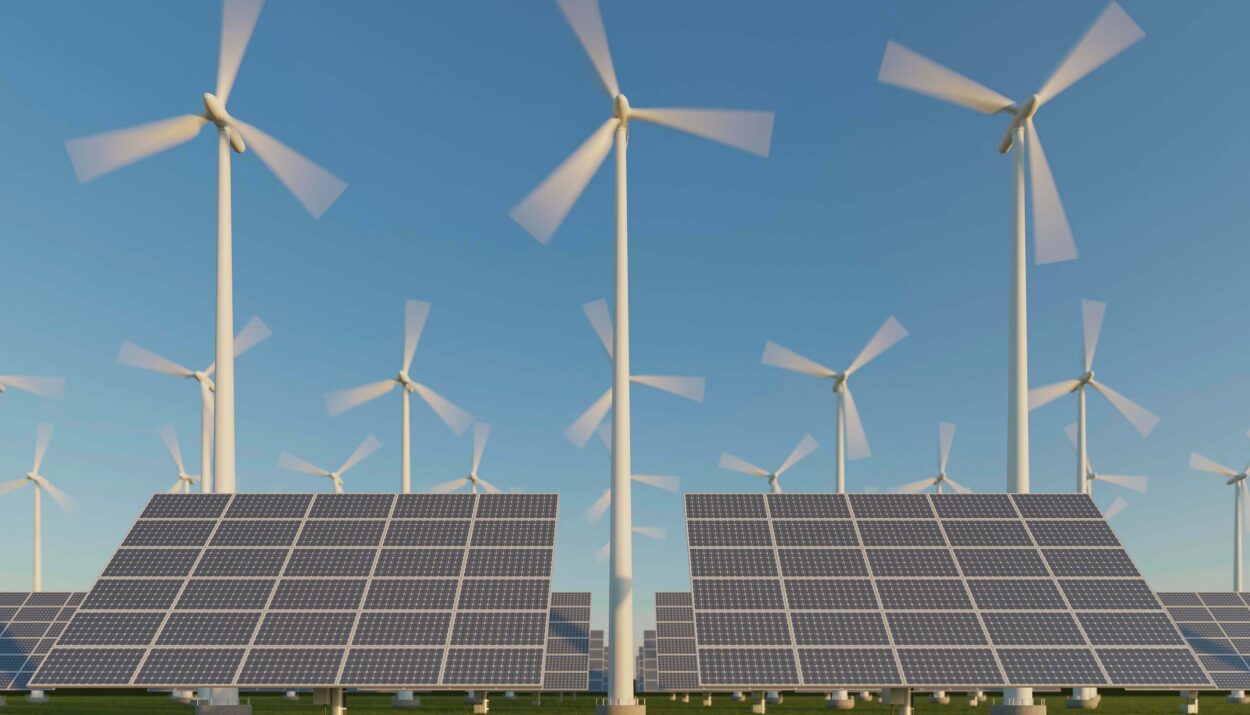Renewable Energy Systems: The Power of the Future
The world has experienced a significant increase in energy consumption over the past century. This rise has led to the overuse of fossil fuels, environmental degradation, and climate change. The limited nature of fossil fuels and their environmental impacts have heightened interest in renewable energy sources. Renewable energy systems are sustainable, environmentally friendly, and economical. This article will discuss the types, technologies, advantages, and challenges of renewable energy systems.
Types of Renewable Energy
Solar Energy
Solar energy is harnessed by converting sunlight into energy. Solar panels, through photovoltaic cells, convert sunlight into electrical energy. Additionally, solar energy can be used as thermal energy through thermal systems. The advantages of solar energy include its abundant and clean source, low installation and operating costs, and energy independence.
Wind Energy
Wind energy is obtained by converting the kinetic energy of wind into mechanical energy and then into electrical energy. Wind turbines have blades that rotate with the wind. Wind energy is a sustainable energy option due to its low carbon footprint and abundant resource. However, the variability of wind and the impact of turbines on local ecosystems are challenges.
Hydroelectric Energy
Hydroelectric energy is generated by converting the potential energy of water into electrical energy. Hydroelectric plants, built on dams and rivers, utilize the falling force of water to turn turbines and generate electricity. Hydroelectric energy is widely used due to its high efficiency and long lifespan. However, the environmental impacts of dams and the displacement of local communities are significant disadvantages.
Biomass Energy
Biomass energy is derived from burning or processing organic waste and biological materials. Agricultural waste, forest products, food waste, and animal waste can be used to produce biomass energy. Biomass energy is environmentally friendly as it recycles waste into energy. However, sustainable sourcing of biomass and control of greenhouse gas emissions are important.
Geothermal Energy
Geothermal energy is harnessed by converting the heat from the earth’s depths into energy. It is commonly found in volcanic regions and geothermal areas. Geothermal energy is a continuous and reliable energy source. However, the limited availability of geothermal resources and their impact on local ecosystems are disadvantages.
Renewable Energy Technologies
Solar Energy Technologies
Photovoltaic Cells
Photovoltaic cells are semiconductor devices that convert sunlight directly into electrical energy. These cells, usually silicon-based, are the basic components of solar panels. The efficiency of photovoltaic cells is increasing as technology advances. Monocrystalline, polycrystalline, and thin-film photovoltaic cells are the most commonly used types.
Solar Thermal Systems
Solar thermal systems convert sunlight into heat energy. These systems can be used for water heating, industrial heating, and electricity generation. Flat plate collectors, vacuum tube collectors, and concentrator systems are examples of solar thermal technologies.
Wind Energy Technologies
Horizontal Axis Wind Turbines
Horizontal axis wind turbines are the most widely used turbines. These turbines have blades that rotate on a horizontal shaft and are ideal for large-scale energy production. Horizontal axis turbines are preferred due to their high efficiency and wide application range.
Vertical Axis Wind Turbines
Vertical axis wind turbines have blades that rotate on a vertical shaft. These turbines can operate at lower wind speeds and are suitable for smaller-scale applications. Vertical axis turbines can be used in urban and rural areas.
Hydroelectric Energy Technologies
Dam-Based Hydroelectric Plants
Dam-based hydroelectric plants are based on the principle of storing water behind a dam and generating electricity through turbines. They are suitable for large-scale energy production and provide energy continuity through water storage capacity.
Run-of-River Hydroelectric Plants
Run-of-river hydroelectric plants generate energy by utilizing the natural flow rate of rivers. These plants are suitable for smaller-scale projects with less environmental impact. Run-of-river plants are used to meet local energy needs.
Biomass Energy Technologies
Biogas Production Systems
Biogas production systems convert organic waste into biogas through anaerobic fermentation. Biogas, containing methane and carbon dioxide, can be used for electricity production, heating, and as fuel. Biogas systems combine waste management with energy production.
Biomass Combustion Systems
Biomass combustion systems obtain heat energy by burning organic materials. These systems can be used for electricity production and industrial heating. Biomass combustion is important for sustainable energy production and waste utilization.
Geothermal Energy Technologies
Geothermal Power Plants
Geothermal power plants generate electricity by using the hot water and steam found underground. Dry steam, flash steam, and binary cycle power plants are the most commonly used geothermal electricity production technologies. These plants provide continuous and reliable energy production.
Geothermal Heating Systems
Geothermal heating systems use underground heat directly for heating purposes. These systems are used for building heating, greenhouse heating, and industrial processes. Geothermal heating is preferred for its low operating costs and environmental friendliness.
Advantages of Renewable Energy Systems
Environmental Benefit
Renewable energy systems have a much lower carbon footprint compared to fossil fuels. These systems reduce greenhouse gas emissions, helping to combat climate change. They also reduce air and water pollution and protect natural habitats.
Economic Benefit
Renewable energy sources are economically advantageous in the long term. Sources like solar and wind have low operating and maintenance costs. Additionally, they provide energy independence, protecting against fluctuations in energy prices.
Energy Security
Renewable energy systems increase energy security by using local energy sources. This reduces dependence on energy imports and prevents interruptions in energy supply. Renewable energy supports local economies and creates job opportunities.
Sustainability
Renewable energy sources are inexhaustible and continuously replenished. Unlike fossil fuels, these sources do not deplete and provide clean energy for future generations. Sustainable energy policies form the foundation of long-term energy strategies.
Challenges of Renewable Energy Systems
Technological Challenges
Renewable energy technologies are continuously evolving and improving. However, some technologies are still costly and face efficiency issues. Storage technologies are critical to ensuring the continuous and reliable use of renewable energy.
Economic Challenges
Renewable energy projects may require high initial investment costs. This can lead to financing issues, especially in developing countries. Additionally, government incentives and support mechanisms are important for competing in energy markets.
Environmental and Social Challenges
Renewable energy projects can sometimes have negative impacts on local ecosystems and communities. Dam projects can alter river ecosystems and cause the displacement of local populations. Wind turbines can affect bird migration paths and create visual pollution.
Renewable Energy Policies and Incentives
International Policies
The United Nations runs various programs and agreements in line with renewable energy and sustainable development goals. The Paris Agreement highlights the importance of renewable energy in combating climate change. Organizations like the International Energy Agency (IEA) and the International Renewable Energy Agency (IRENA) support and promote renewable energy policies.
National Policies
Many countries have set renewable energy targets and policies. These policies are supported by government incentives, tax reductions, financial support, and regulatory frameworks. Germany’s Renewable Energy Act (EEG) and China’s solar energy incentive programs are prominent examples in this field.
Local and Regional Policies
Local and regional governments offer various incentives to support renewable energy projects. These incentives include municipal-level financial support, energy cooperatives, and community energy projects. Local energy independence and sustainable development goals promote the spread of renewable energy projects.
The Future of Renewable Energy
Technological Advancements
Continuous innovations and improvements are being made in renewable energy technologies. Solar panel efficiency is increasing, wind turbine capacities are expanding, and storage technologies are developing. Additionally, artificial intelligence and digitalization are increasing efficiency in energy production and management.
Energy Storage and Smart Grids
Energy storage technologies are critical to ensuring the continuous and reliable use of renewable energy. Advances in battery technologies are increasing storage capacity and reducing costs. Smart grids play an important role in managing energy demand and integrating renewable energy sources.
Global Collaborations and Investments
Renewable energy projects are rapidly spreading through global collaborations and investments. International financial institutions, development banks, and the private sector are investing in renewable energy projects. Global collaborations enhance renewable energy capacity through knowledge sharing and technological transfer.
Sustainable Development and Energy Future
Renewable energy is a cornerstone of sustainable development. Clean energy production balances economic growth, environmental protection, and social development. Investments in renewable energy are crucial for a sustainable energy future.
Conclusion
Renewable energy systems play a significant role in meeting global energy needs and addressing environmental issues. Renewable sources such as solar, wind, hydroelectric, biomass, and geothermal energy provide sustainable, clean, and economical energy solutions. Technological advancements, policy incentives, and global collaborations promote the widespread use of renewable energy. Renewable energy systems have the potential to offer a clean and sustainable energy future for future generations.






